Autumn feeding of fruit bushes
After the last fruits have been gathered from the berry bushes, it seems that all the work on their care has been completed. But...
Rolled material for fencing is measured in linear units
To determine how much repair or construction work and materials used will cost, they usually use not a classical meter, but a unit called linear meter. It is used in the manufacture of various types of products when buying furniture. Most often this indicator is used in the construction of new objects, including running meter fence. This is required to calculate the amount of material required for future fencing.
Using a running value, measure what can be rolled. It implies only the length of the product, and its width is not taken into account. With its help, the calculation is facilitated, the cost of production decreases. Indeed, often the width of a building material is a standard value, and sometimes it makes no sense to pay attention to it.
This value also consists of 100 cm. In the word “running” itself directly indicates that only the length is taken into account. After all, “drive” means to turn in one direction, strictly in a straight line. One can imagine that the material itself, rolled up, is just a straight line.
Data-ad-layout = "in-article"
data-ad-slot = "9391934556 ″\u003e
On the packaging of rolls of many materials you can see the price tag, where it says how much a linear value costs. But there are those that have a price for a certain area. In this case, not only the length but also the width of the product is taken into account. The area equal to 1 m 2 has a square section with the dimensions of each side - 1 m.
To calculate the area of a rectangular plot or raw materials for construction, you need to multiply the length by the width. The result obtained is the area expressed in m 2. Linear and square meterwe have only one similarity. This is a length of 100 cm. Otherwise, they are different.
The linear method cannot be used to measure the area, it is intended only for measuring length. But it can be easily converted to a square meter, if the width of the product is known, which for calculation needs to be multiplied with meters.
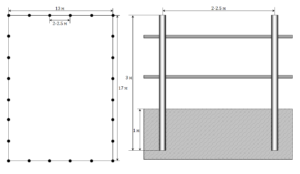
The layout of the territory for measuring
This value is traditional fencing, the canvas of which is a profile sheet or tree. It will be equal to a simple meter if the height of one sheet is also equal to 1 m. Just as when calculating the amount of web material, width is not taken into account, since it is standard, height is not taken into account when erecting a fence. It must also be permanent. But it should be borne in mind that the height of the fence does not always coincide with the size of sheets of building material.
If, for example, a fence is being built with a meter to the height, and professional sheets with a height of 1 m are used, then the linear value of the fence will be equal to the meter of building material. But if the fence is higher, and the professional sheets or boards will be used the same, they will need more. Therefore, before buying raw materials should all be calculated correctly.
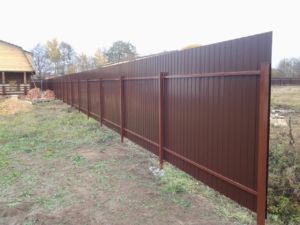
The correct calculation of the consumable material will avoid unnecessary costs.
Such a simple design, as a fence around the site requires accuracy of calculation like any other object.
Attention! Competently and according to all the rules, the completed construction schemes together with all the required calculations will help to avoid installation errors and operational problems.
The fence consists of several elements:
To avoid unnecessary financial costs, it is necessary to make simple measurements and calculations of how much material will cost, using simple mathematical techniques. If the length of the fence is divided by the width of the building material that is used as the canvas, the result of the calculation will be a number corresponding to the required number of sheets.
Data-ad-format = "fluid"
data-ad-layout = "in-article"
data-ad-client = "ca-pub-4225432977519887 ″
data-ad-slot = "9391934556 ″\u003e
Assume that the fenced area has the shape of a rectangle with sides of 30 m and 20 m. First of all, we determine how much the perimeter will be. And it will be equal to the length of the fence. For this, the lengths of the sides are added and multiplied by 2. The perimeter of such a section will be 100 m.
For further calculations, it is enough to know the width of the raw materials used and the height of the fence. For example, it will be equal to 1 m, and profiled sheeting will be the raw material. As a result, you will need to buy 100 sheets. But just in case it is better to buy a little more to have a reserve.
If the width is about 2 m, a minimum of 50 sheets will be required. That is, to determine how many sheets are required, the perimeter needs to be divided by the width of the material. In order to determine how many meters of material will be required for the construction of the fence, multiply the perimeter by the estimated height.
That is, to install a meter fence on a 100-meter perimeter, 100 running units of building material will be required. For the construction of a two-meter fence height you will need 200 m of the same building material and so on.
If the price of a single linear value is known, then it is not difficult to calculate how much building material required for the installation of the fence will cost.
Linoleum belongs to the group of resilient flooring, which are stacked on a previously prepared base. Before purchasing a coating, it is necessary to carry out design work based on the area of the room.
The linoleum calculator located below will allow you to perform all computational operations online. For this tedious to just enter the original data on the room and material.
Wood construction in the framework of private projects continues to gain popularity in our country. Cottages, country houses and cottages are increasingly being built from natural wood in the form of lumber. The most popular among them is timber - profiled or glued, as one of the most economically advantageous and expedient materials. In this article we will figure out how many cubic meters of this material are in a running meter of a bar, and also vice versa, we will learn to count the number of pieces in one cubic meter of products.
What will be discussed:
When calculating the amount of materials needed for construction or plating, it is very often difficult to convert from one unit of measurement to another. Often, private developers who are going to build a house out of lumber, or facing the finished building with a beam, clapboard or block house, do wrong calculations due to errors in determining the right amount of material. In the field of construction and installation works use several units of measurement of materials in accordance with the area of their use. The basic unit is the running meter.
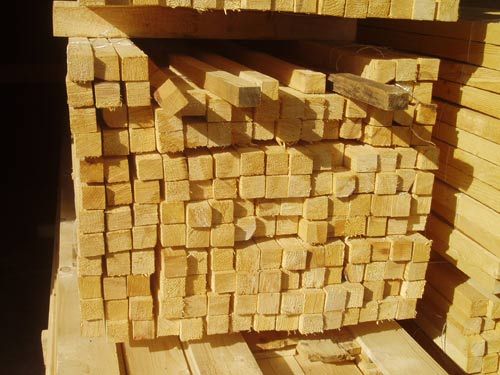
It is customary to measure lengthy materials with a running meter - a timber, a rounded log, lining, pipe-rolling and other objects whose length is several dozen times greater than the width and height. In this case, the running meter, say, of a bar, means only the length of the products, and the width and height are not taken into account in this definition.
Those. if we are talking about a meter of laminated veneer lumber 6 m, it means that the standard length of one product, which the manufacturer makes, is 6 m (600 cm, 6000 mm). Width and height of products can be any - 150 mm, 30 cm, etc. , as well as the height of the board (10 mm, 15 mm, 20 mm).
![]()
The main difficulty is how to calculate the running meter of the beam required, for example, for building a house. The fact is that most lumber manufacturers call the price for their products in linear meters and cubic meters, and when ordering a large amount of material, you will have to pay not for one meter, but for the volume.
It is easy to understand what is meant by the number of boards of a certain pogonazh, which fit into one cubic meter. And in order to order the required number of boards or lining for covering area, you need to convert one linear meter of material into a cubic meter. Theoretically, this is quite simple, for this you need to know the width and height of products from the manufacturer, and make simple arithmetic calculations.
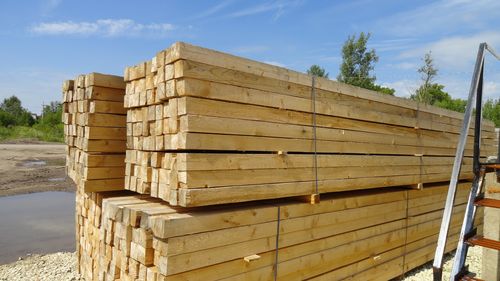
For example, if we are given a linear meter of timber 150x150 with a length of 6 meters, then knowing the design data for a future home, we must calculate how many cubic meters of material we need. To begin, let us know how many cubic meters will be in one product 150x150.
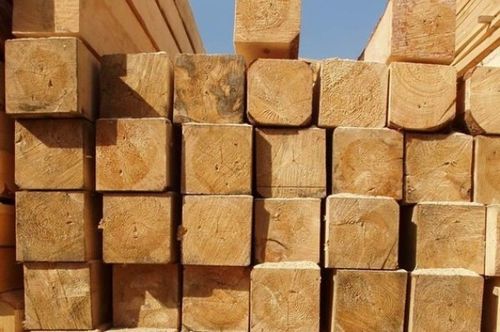
To do this, simply multiply all values in meters, i.e. 0.15 x 0.15 x 6 = 0.135 m3 is in one board. Now we calculate the number of products in one cubic meter, for this we divide one meter by the resulting volume: 1 / 0.135 and get 7.4 pieces. That is, in one cubic meter of lumber 150x150 mm and a length of 6 fits almost seven and a half pieces.
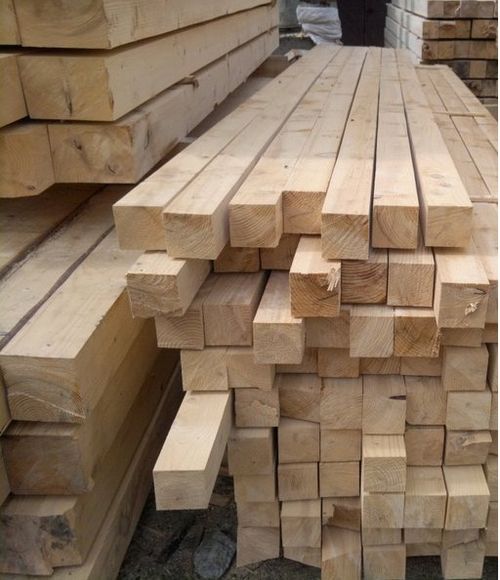
Knowing the design area of walls for cladding or other types of work using timber, it is easy to calculate the number of cubic meters of lumber for the project. The same calculation methods can be used for products of other sizes. For example, we need to count. how many pieces of boards 100x100 mm will be in one cubic meter of lumber when ordering. To do this, knowing the running meter of the product, we perform simple calculations. Say, the length of the beam is 5 meters. We count in meters: 0.1x0.1x5 = 0.05 m3. And in one cubic meter of 100x100 exactly 20 pieces will turn out.
It should be noted that most manufacturers produce timber in 5-6 meters, but there are other values. Depending on the type of product, you can find products and 4 running meters of 150x150 mm, and in this case, using the same calculations, we get 11 pieces in one cubic meter of timber. It is also easy to calculate how many linear meters of timber in a cube for products of 50x50 mm: 0.05x0.05x4 = 0.01, and based on one cubic meter for the number of boards, we get exactly 100 pieces.
For the convenience of customers, many manufacturers offer on their websites convenient calculators for calculating linear and cubic meters of sawn timber. You just need to enter the dimensions of the product section, as well as the length, and the calculator will immediately give you a volume of 1 m3 of the beam, as well as the number of pieces in one cubic meter. Many calculators also immediately show the cost of products in linear and cubic meters, which greatly simplifies the buyer's task when ordering the right amount of material.
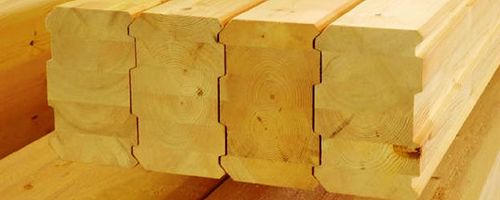
If you have independently developed a project to build a house, and you want to know how much material you will need based on linear and cubic meters, you must consider the size and area of all elements of the future construction of the house. Most of the projects of wooden log houses today have a wooden frame and walls, as well as a truss roof system based on sawn timber.
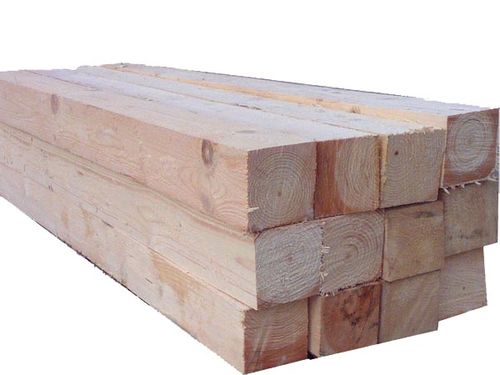
To calculate the required amount of lumber for your project, first decide what kind of timber you need. Usually within the framework of one project several types of this material are used. For example, for the framework, a durable timber 150x150 is used, for walls it is possible to take a thinner 100x100, for finishing a product of 50x50 mm is used. Find out the running meter of timber in the construction of your home and make calculations based on the required number of structural elements.
Very often in stores you can find price tags on which the unit price of a product in relation to 1 linear meter is indicated. And the question arises, how long is the meter? One linear meter is 100 centimeters, which means that it is a usual 1 meter. So, 1 p. M. = 1 m. But, if it is an ordinary meter, then why is it a linear one and what is the "highlight" here?
What goods measure linear meters? The running meter is a unit for measuring the length of such goods:
Such goods in stores come in the form of rolls, reels, plates, etc. For example:
To purchase the goods you need, measured in m, do not be mistaken in the correctness of determining the quantity of this product, you must know exactly the parameters of the room, product, material for which you purchase this product.
Suppose you want to buy a carpet for a room with an area of 20 m 2 (5 m long and 4 m wide). It is important for you that the length of the room is covered completely, as far as the width is concerned, it is permissible that there are places not covered by the edges of the room. You come to the store and in front of you a large selection of carpets, how do you find your way around the situation?
You liked two types of carpets (in color and pattern): one worth N rub / p. m., another - M rub. / p. The difference in the price of carpets is explained by their different width, which is taken into account in the price (one is 3.0 m wide, the other is 3.5 m). The question is - how much carpet should you buy?
A feature of the choice of carpet, is that it should be a solid piece, without joining, so the choice criterion should be its width.
Thus, you should buy 5 m of the cover, the width of which will suit you more.
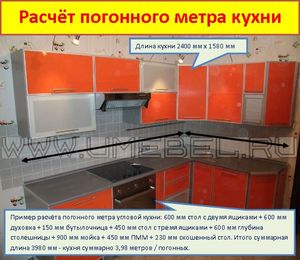
You are going to buy linoleum for the kitchen 2.5 m wide and 5 m long. In the store you can see rolls of different widths: 1.5 m, 2.0 m and 2.5 m. How much linoleum should you buy? You must choose a linoleum width of 2.5 meters (ie, the width of the kitchen) and buy it 5 pm and lay the kitchen floor in one piece. But this is the ideal case when the width of the linoleum coincides with the width of the kitchen.
And what to do if the kitchen is 3 meters wide? In this case, one piece of the floor is not zasleesh. One has to think how to dock two pieces. So, for this you need to take 10 p. M. From a roll 1.5 m wide (or ask the seller cut two pieces 5 p. m., so you do not cut it yourself). In this case, the joint will take place exactly in the middle of the kitchen. Linoleum can be placed not only in its length, but also in width, thus varying the place of the seam and the amount of linoleum, depending on the area of the surface to be covered.
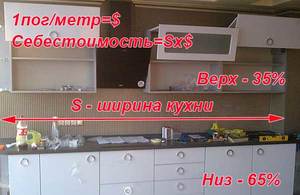
As for fabrics, there are some nuances associated with running footage.
Suppose you need to buy tulle for curtains on the window, paired with the door overlooking the balcony. The calculation will be as follows: roll width - this will be the length of your curtain, and for the width of the curtain we have to take the double width of the window (taking into account the coattails). Thus, with a width of a window with a door of 3 m, you need to buy 6 pm of curtains.
In order to buy plastic film for greenhouse equipment, it is necessary to draw each piece of greenhouse that is to be covered with film on paper in the correct scale. Then count all of them. parameters: length and width, add up and calculate the required amount of film. Do not forget the additional quantity for fixing the film to the greenhouse fragments. When buying a plastic film, you need to pay attention to the fact that the film in a roll, as a rule, is double, which means that when buying, the necessary figure should be divided by 2.
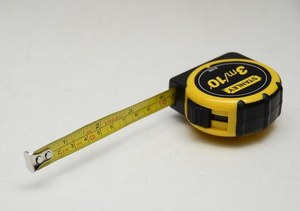
To buy baseboards or cornices, you need to measure the perimeter of the floor and ceiling, taking into account the protrusions of beams, niches, etc. By summing up all the dimensions, you can determine how many meters of baseboards or cornices you need.
The first option is more literate, since in this case you will know exactly which cable cross-section, to which points and for what purpose will be let down. On this basis, it is possible to accurately calculate how many PM of which cable and with which section you will need. At the same time, it is necessary to remember the installation stock. Usually, it is necessary to add at least 2 m to the total number of required PM.
The second option is very simple: it is necessary to determine the total area house and multiply it by two and add 2 m to the reserve.